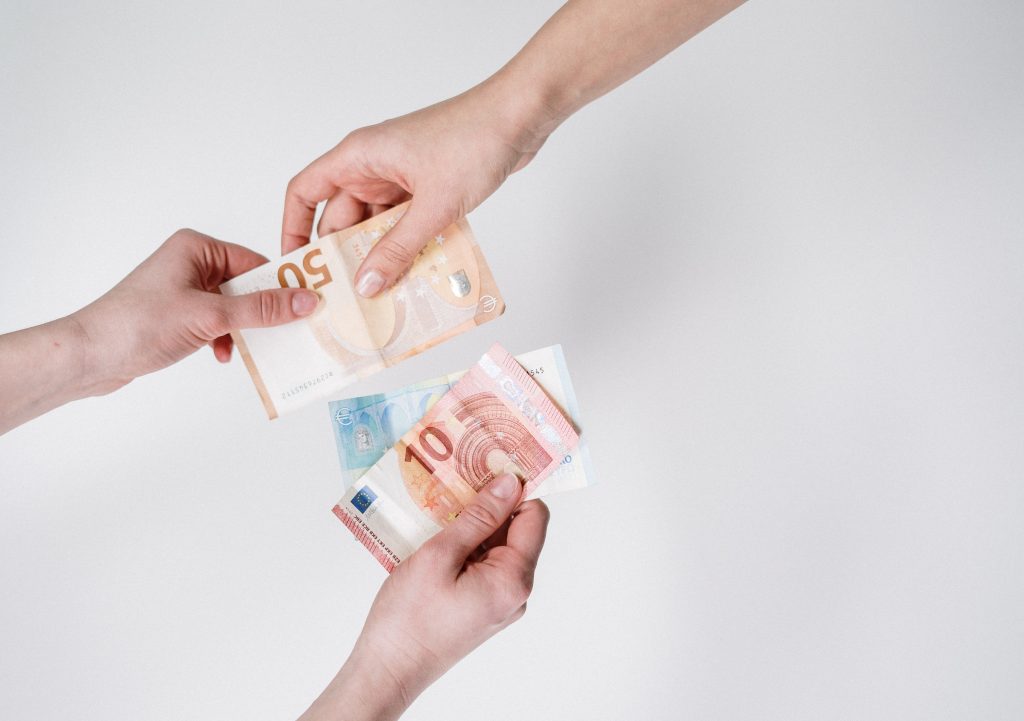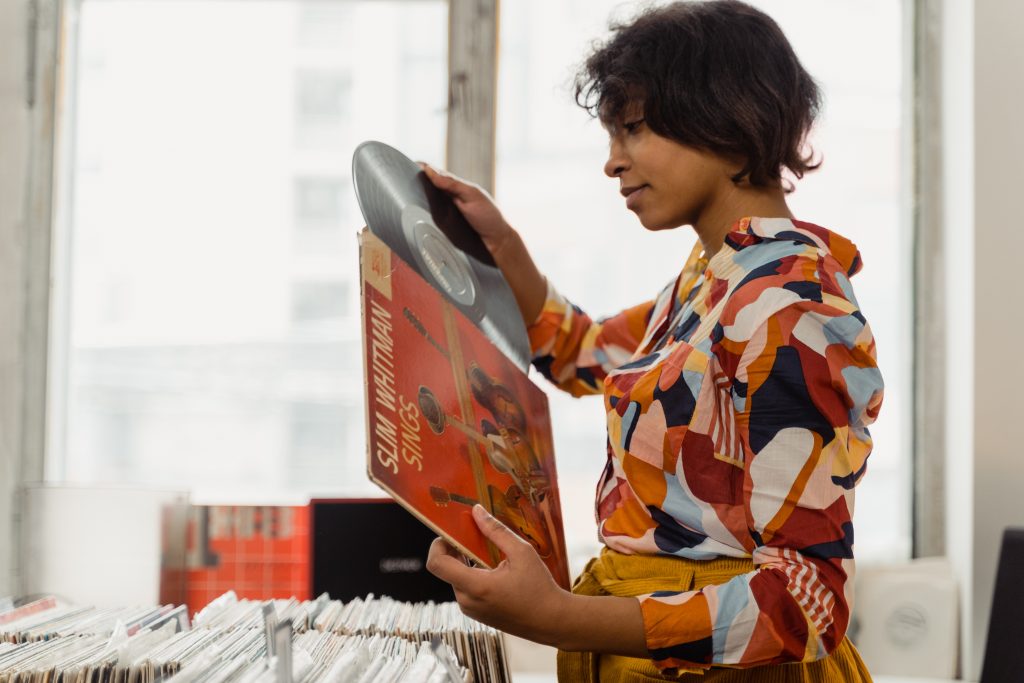Digital Music Distribution vs Music NFTs | What’s the Difference?
Technology has changed the landscape of distribution over the decades. Now, music NFTs are altering the way we view digital music distribution. Is one better than the other, or can they work harmoniously together? We’re looking at the major differences right here.
Traditional distribution methods have changed drastically thanks to technology over the decades. Music NFTs have shaken things up within digital music distribution recently. Let’s take a look at the difference between digital music distribution and music NFTs, and how the two can work together to create something powerful!
With the rise of new technology, there’s often a subtle panic amongst veterans of traditional methods. Will they be replaced by robots? The rise of writing AI has certainly made many a blog writer squirm recently. Although I consider myself somewhat of a traditionalist (some have used the word “Luddite”), I decided not to panic. Instead, I explored the opportunities and advantages presented by this rising AI technology.
I’ll let you peek behind the curtain a little here; this blog topic was brought to you by a popular AI platform, and saved me precious minutes whilst I finished my morning cereal.
Keeping this train of thought, blockchain technology and music NFTs can transform digital music distribution in ways that empower independent musicians. A popular theme throughout the web3 music space currently is the creation of opportunities for independent artists. The idea of taking back control of one’s art from fat cats and middle men is beginning to feel tangibly close. How can combining NFTs with distribution help to achieve this? Before we can answer this question, let’s look at the difference between the two.
What Is an NFT?
An NFT, or non-fungible token, is an authentication of ownership that exists on the blockchain.
- Fungible: In terms of a product or commodity, something that is fungible can be replaced by an identical item.
- Non-Fungible: An entity that is completely unique and, therefore, cannot be copied.
Let’s put this in simpler terms. If you had a dollar, you could swap it with another dollar and be left with the same thing. But, if you did this with an NFT, even if the assets attached to it appeared identical (don’t overthink it), it wouldn’t be the same.

That’s because NFTs, at their core, are blocks made up of a string of numbers and letters. These blocks represent the transaction of the NFT being created or purchased, shown on an immutable distributed ledger (the blockchain).
NFTs can be created as part of a collection, with multiple available. A great example of this is music album NFTs. Last year, Muse became the first artists to reach number 1 in the UK album charts with an album that was also available as an NFT. Although each of the NFTs sold provided buyers with the same asset, the block of code attached to each one is unique.
Traditional Music Distribution
What’s the earliest form of music distribution you can remember engaging with?
Maybe you queued up at record stores, patiently waiting to grab the latest vinyl from your favourite band. Perhaps you have a hefty cassette collection in your attic. Or, maybe you joined the music community by taking part in peer to peer file sharing.
The point is, the distribution of music has developed a lot over the last few decades. The latest iteration, digital music distribution, consists of downloads. But, the primary focus over the last 12 years or so has been music streaming.
This burgeoning industry is dominated by the likes of Spotify, Apple Music, and Tidal. Newer monetisation options, like streaming royalties, mean these platforms hold a lot of power over artists and their careers. Whilst these services have helped to kick indie artists’ careers off, the earning models also limits and stifles these same creators.
With music streaming being the core of modern digital music distribution, it’s a perfect time to consider how it can be improved. NFTs can shake up how artists receive earnings, how much control they have over their art, and how they progress their careers. Here are the key differences between the two.
Ownership

A significant difference between music NFTs and digital music distribution is ownership.
With digital distribution, you are either purchasing and downloading a copy of a piece of music, or you’re streaming it for free or as part of a subscription. The ownership of the music itself remains with the artists, label, and any other business associates involved.
However, with music NFTs, there is a stronger sense of ownership. Whilst the copyright of a piece of music still belongs to the rights holder, a music NFT buyer owns something more unique and special. This could be a rare collector’s piece, or a productive asset that generates value in itself.
Value
Another difference between music NFTs and digital music distribution is value. When music is sold online, the value is largely determined by retailers. This also can depend heavily on the prominence or popularity of the artist. Other factors are also taken into consideration, including the quality of the music, the number of streams, and how many copies have been sold previously.
In terms of NFTs, the value of a music NFT can still rely heavily on the above factors, but the uniqueness and rarity factors play a big part too. Just like collectible items, the scarcity of a music NFT can increase its value. If a NFT has music streaming royalty sharing attached to it, its sale value is increased due to its capacity to generate passive income for buyers.
Digital Music Distribution Revenue vs NFTs
The way artists earn revenue through standard music distribution is very different to NFTs. Revenue generated from downloads and sales is divided between numerous parties before it even reaches the artist.
In the case of music streaming, this revenue tends to be paid monthly, and can amount to not very much once all the cuts have been deducted. This earning model makes it difficult for newer artists to fund their careers, since it’s likely that music streaming is their main source of revenue.
Artists who create and sell music NFTs can earn money in several ways:
- Revenue is generated from the primary sale of the NFT
- A percentage of the secondary sale can go to their original creator
- Creators can sit on NFTs and drop another round when the value has increased
If hype is generated by NFT versions of an artist’s music being sold, this can also lead to a spike in streams on digital services. As a result, more streaming revenue is generated for the artist each month. A perfect example of NFTs and digital music distribution working in tandem with one another.
Accessibility
Digital music distribution is widely accessible. Anyone with an internet connection can access almost any music in the world they want to. Whilst there are some people that think this level of accessibility has contributed to the devaluation of music, it’s also been fantastic for broadening horizons and launching careers.
The technology surrounding music NFTs is still relatively new, and can require some level of experience and knowledge before accessing it. If you’ve never encountered the blockchain, there’s a fairly steep learning curve. Technical knowledge is often required before buying NFTs. However, Fractis is dedicated to making the buying of music NFTs accessible to everyone!
Verifiability

One of the major advantages of music NFTs is verifiability. With digital music distribution, it can be difficult to prove whether you own a particular piece of music. If you’ve got your hands on a limited edition piece of music, and you want to sell it, it can be challenging to show that it’s authentic.
When you buy an NFT, the transaction is recorded on the blockchain. This means that you can verify ownership, as well as prove your ownership, and the authenticity of a piece of music. As a result, you’re less likely to be tricked into buying fake versions of something.
Wrapping Up
It’s clear that music NFTs and digital music distribution are two very different methods of distributing music. However, we shouldn’t think of them both in isolation.
NFTs present an array of opportunities for artists to monetise their music in new and exciting ways. These advantages, paired with traditional digital music distribution can create a landscape where artists have more power. At Fractis, we believe this is exactly how it should be.
To sum up, music NFTs offer greater ownership and control over a piece of music, which is an obvious pro for artists. There’s increased potential for higher revenue, greater verifiability, and the opportunity to create exciting and unique NFTs. From the perspective of a collector or fan, you get to own a piece of history whilst directly supporting your favourite artists.
However, the accessibility and complexity of the process may be a barrier for some. Fractis is working to offer a leading music NFT marketplace that anyone can use. You don’t need previous blockchain or NFT knowledge. We’re building towards a fairer music industry where useful NFTs just become the norm.
Ultimately, the choice between Music NFTs and traditional music distribution will depend on the artist’s goals, values, and audience.
Sign up to Fractis today, and be first in line to join the royalties revolution!
